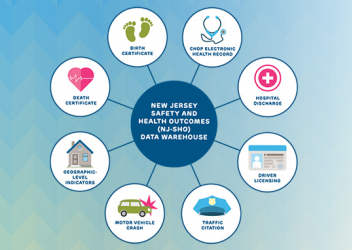Research In Action
Research In Action
Breadcrumb

Since starting at CIRP in 2019, I have been conducting formative work upon which to launch my independent research career in transportation equity. Within this foundational work, our team created innovative and expansive data sets, performed rigorous data analyses, and worked with numerous collaborators to explore various data sources and analyses. We are now beginning to conduct applied studies that are designed to not only identify sources of disparities and inequities, but also to directly inform the development of real-world interventions and tools.
For our first applied study, recently published in the Journal of Safety Research, we were able to uncover patterns of seat belt use among different communities by estimating the prevalence of New Jersey drivers not wearing a seat belt between 2010 and 2017. Encouragingly, with our novel approach we found that overall rates of drivers not buckling up was lower than other estimates during this same period. That said, we also found that drivers who live in the most vulnerable communities were 121% more likely than those living in the least vulnerable communities to not wear a seat belt.
A particularly important contribution of our study is that the data source we used to create our indicators of vulnerability—The Census Bureau’s Community Resilience Estimates— may be a particularly promising source of data to inform and allocate future seat belt education and communication efforts. It provides unique information about who is at risk for not wearing a seat belt (for example, factors such as if a household has internet access or speaks English) as well where they live (at the census block level).
Reaching Communities at Risk
Critically, multiple transportation-based disparities are widening, including crash injuries and fatalities. A significant amount of public health efforts to narrow these disparities exist at the population or universal level (e.g., laws, national campaigns); but unfortunately, they often have not worked. Future studies must produce more specific information about why certain people remain at risk so that effective efforts can be implemented.
With these challenges in mind, I am excited to continue conducting studies that are focused on learning more about specific reasons why inequities in transportation outcomes exist. This includes my NICHD-funded work in disparities in child occupant protection, as well as ongoing work examining why some populations have higher crash fatality rates, lower licensing rates, and higher non-driving related license suspension rates. This type of research will help to inform the development of tailored and evidence-based strategies and resources for the communities most at risk.




